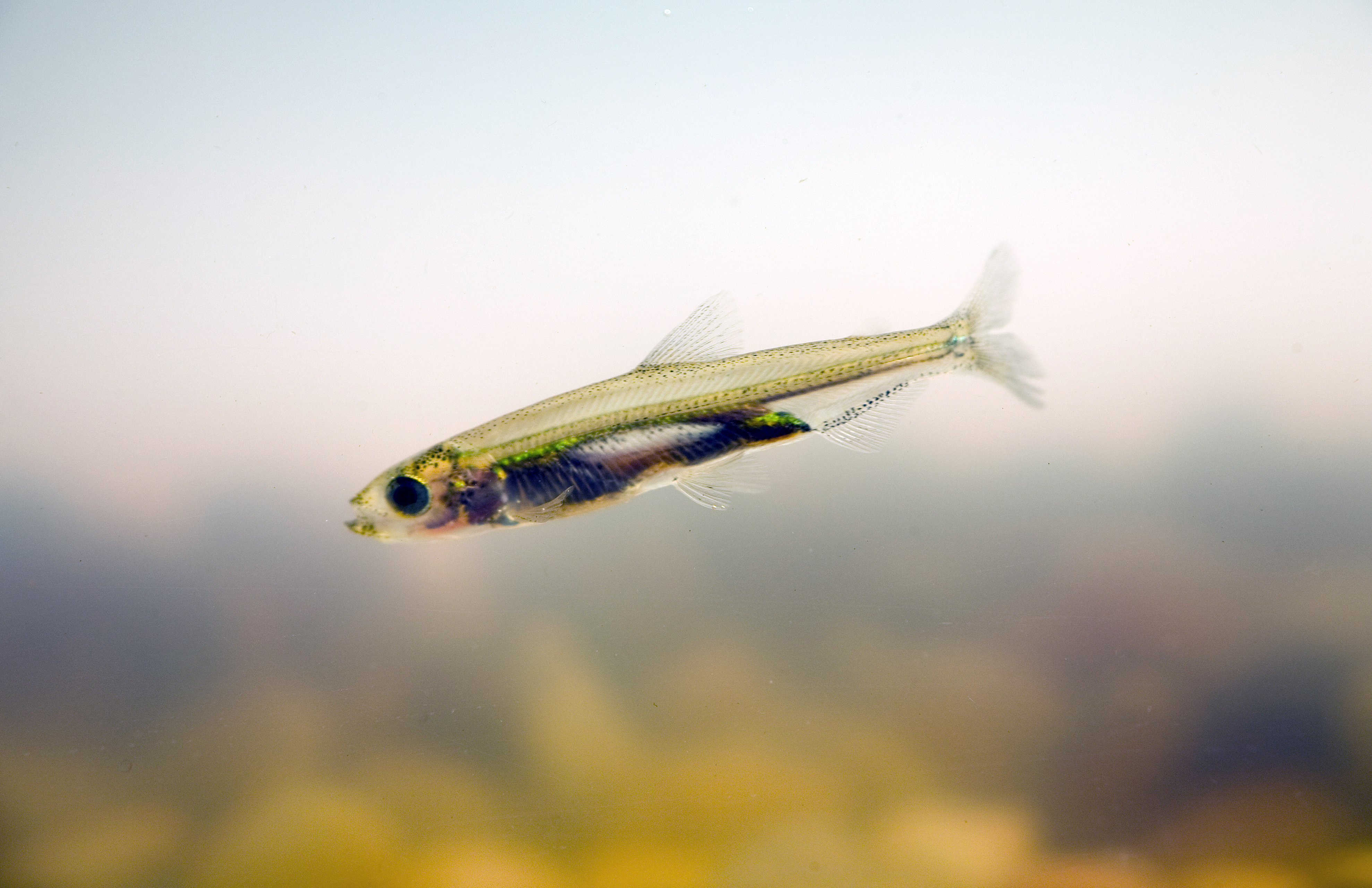
A juvenile Delta Smelt inside a rearing tank at the U.C. Davis Fish Conservation and Culture Lab where Delta Smelt studies are ongoing.
What animal is only three inches long, found only in the Sacramento-San Joaquin Delta region, and smells like cucumbers? The Delta Smelt! This fish lives in brackish water zones, where freshwater and saltwater mix, for most of the year, but heads upstream to spawn in the spring. Although Delta Smelt can handle a wide range of salinities, they are very sensitive to anthropogenic alterations to their ecosystem. They are listed as critically endangered due to water pumping, water quality, habitat reduction, and the introduction of nonnative species that compete for food sources.
Delta Smelt are a silvery blue fish that grow to about three inches long and only live for one year. Mature fish spawn upstream in river channels in the spring, then the newly hatched larvae are transported downstream to where salt water meets fresh water where they will feed and grow before making their trek back upstream to spawn. They are not the strongest swimmers and respond to tidal currents, so they tend to stay within limited areas feeding on planktonic copepods, cladocerans, and amphipods. They even act as an indicator species for the health of the Delta ecosystem, showing the impacts of alterations to the Delta and if native species are still able to be supported by this changed ecosystem.

View of a tagged (small red square) Delta Smelt in a study to increase scientific understanding about the wellbeing of Delta Smelt that were raised in hatcheries and then gently acclimated into the wild in a protected enclosure.

View of a Delta Smelt Refuge facility with tanks to rear genetically diverse smelt populations for release into the wild.
California Sea Grant has also had a role in Delta Smelt research, with past funded projects assessing the impacts of climate change on this species and investigating the thermal life histories of it so that Delta Smelt habitat requirements can properly be determined. State agencies and academic institutions are actively working to save this indicator species from extinction while also maintaining water supply for the State, a truly complex problem.

Tagged (small red squares) Delta Smelt in a study to monitor the effects of introducing hatchery smelt into the wild.
Learn more about ongoing research efforts with the Interagency Ecological Program (IEP) here and California Sea Grant here and explore the latest findings regarding Delta Smelt and their environment in the Delta Smelt Conditions Report, regularly updated by the Delta Stewardship Council.
